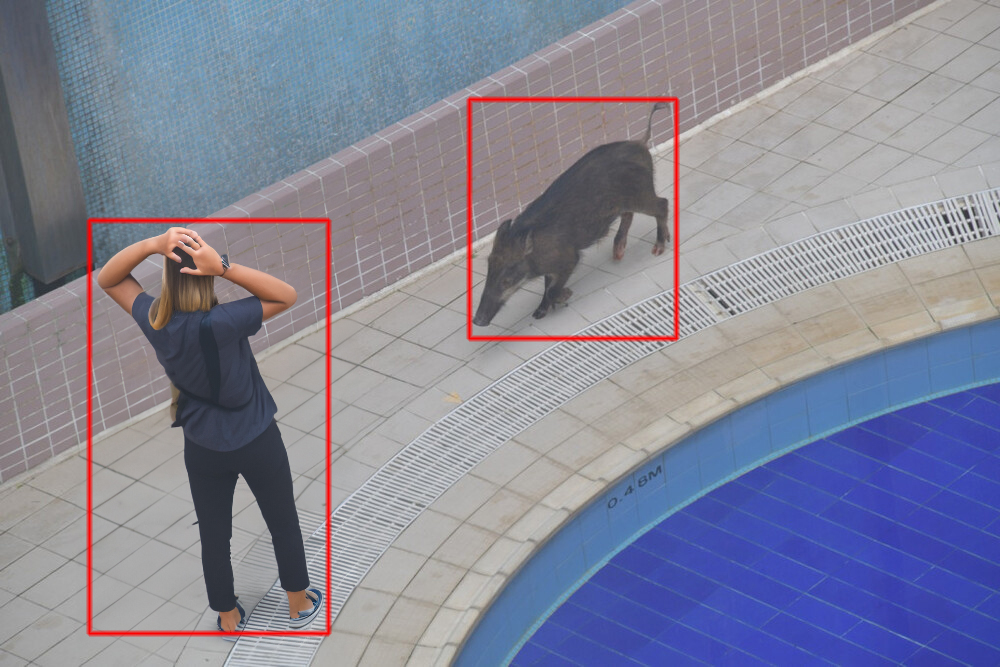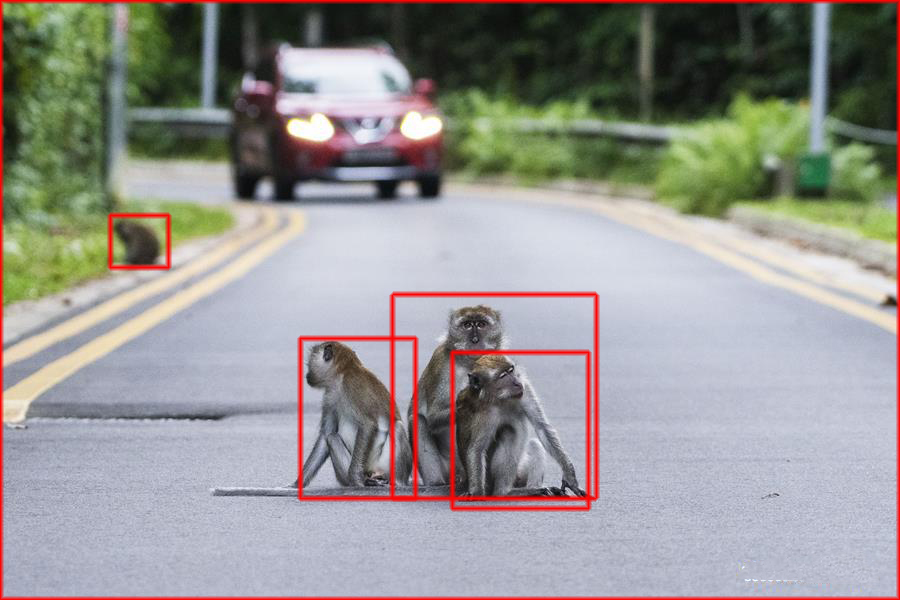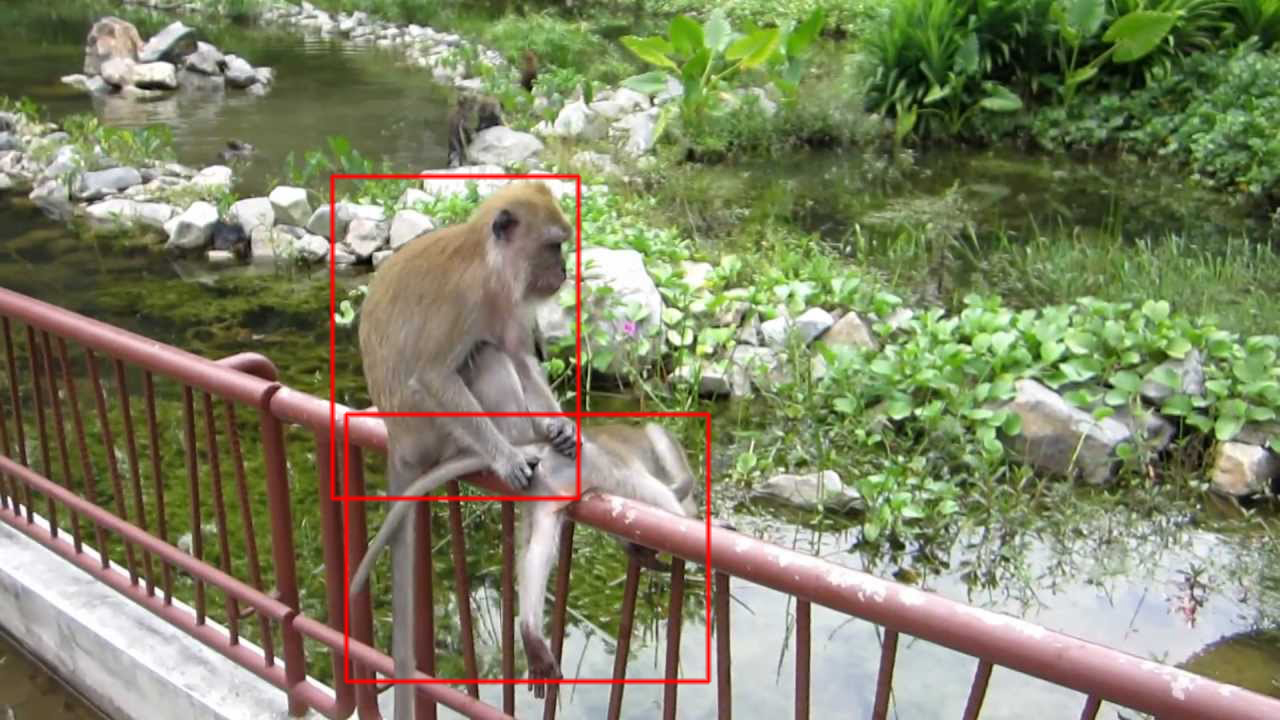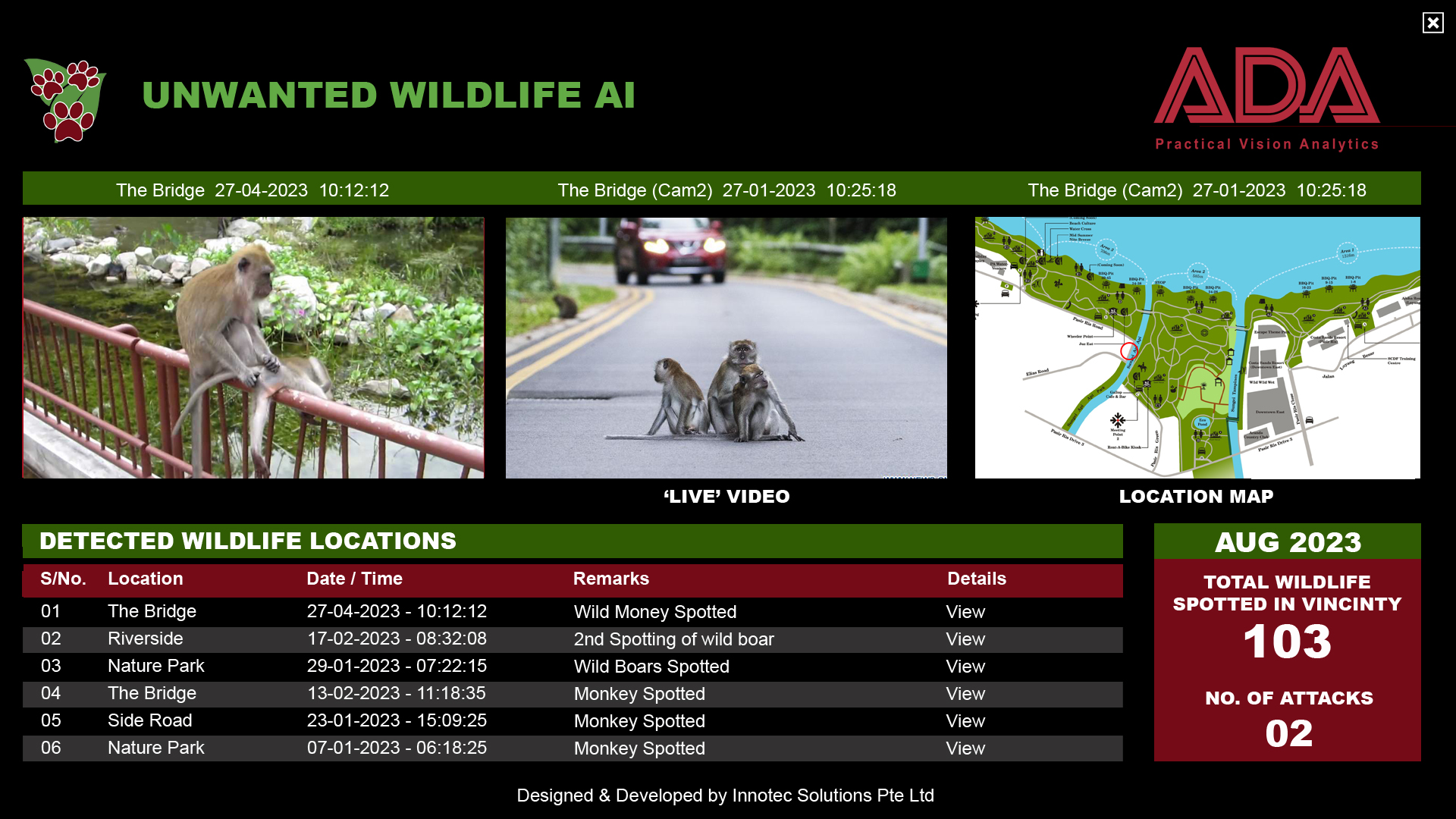ADA Unwanted Wildlife AI

- Plug and Play with existing CCTV Camera System
- Non-GPU based Video Analytics Engine
Enhancing Security and Monitoring:
The Role of AI Integration in Surveillance Systems
for Private Property and Workplaces
Introduction:
In recent years, the integration of Artificial Intelligence (AI) in surveillance systems has revolutionized the way private properties and workplaces manage security and monitoring. This technological leap has extended beyond traditional security concerns to address unique challenges such as detecting unwanted wildlife and ensuring comprehensive estate security. This article explores the pivotal role of AI in monitoring activities and its diverse applications in private property and workplace surveillance.
Problem Statement:
Traditional surveillance systems often face limitations in efficiently addressing evolving security challenges. Conventional cameras and monitoring methods may struggle to detect and respond to unwanted wildlife, posing potential threats to both property and personnel. Additionally, ensuring comprehensive estate security in large properties or workplaces demands a sophisticated system capable of real-time monitoring, analysis, and response.
Inability to Detect
Traditional surveillance struggles with detecting unwanted wildlife on properties.
Lack of Efficient Methods to Detect
Reliance on Public Input
Lack Real-time Solutions
Limited Capability to Distinguish Threats
Lack of Monitoring and Response
Use Case:
Consider a vast estate with sprawling grounds, where traditional surveillance methods may fall short in detecting unwanted wildlife or potential security breaches. ADA AI integrates with existing surveillance systems excel in this scenario by leveraging advanced image recognition and pattern analysis. These systems can distinguish between ordinary movements and those that pose a threat, triggering immediate alerts to security personnel. Moreover, the integration of ADA AI allows for the creation of virtual perimeters, enhancing the accuracy of identifying and responding to potential security risks.
Behavior Recognition and Analysis:
- Wildlife Behavior Recognition: ADA AI distinguishes specific wildlife behaviors from routine activities.
- Pattern Analysis: Analyzes patterns in wildlife behavior to enhance detection accuracy.
- Continuous Learning: Adapts and improves over time through machine learning algorithms.
Alerts and Monitoring:
Security Measures:
Precision Identification:
Operational Efficiency:
User Interface and Experience:
Innovation and Adaptability:




Summary
Furthermore, AI-driven surveillance systems enhance estate security through predictive analytics. By analyzing historical data and identifying unusual patterns, the system can predict potential security threats before they occur. This proactive approach allows security teams to take preemptive measures, reducing response time and minimizing risks.
In conclusion, the integration of ADA AI in surveillance systems for private property and workplaces not only addresses the traditional security concerns but also extends to novel challenges like unwanted wildlife detection and comprehensive estate security. Leveraging advanced image recognition, pattern analysis, and predictive analytics, ADA AI-driven surveillance systems provide a robust solution for monitoring activities and ensuring a safer environment. As we celebrate the one-year milestone of this technological integration, the future holds even greater possibilities for ADA AI in revolutionizing security and surveillance across diverse landscapes.
In conclusion, the integration of ADA AI in surveillance systems for private property and workplaces not only addresses the traditional security concerns but also extends to novel challenges like unwanted wildlife detection and comprehensive estate security. Leveraging advanced image recognition, pattern analysis, and predictive analytics, ADA AI-driven surveillance systems provide a robust solution for monitoring activities and ensuring a safer environment. As we celebrate the one-year milestone of this technological integration, the future holds even greater possibilities for ADA AI in revolutionizing security and surveillance across diverse landscapes.
Solutions:
The integration of ADA AI in surveillance systems presents innovative solutions to the aforementioned challenges. ADA AI algorithms, powered by machine learning, enable cameras to differentiate between authorized personnel, wildlife, and potential intruders. The system can adapt and learn from patterns, continuously improving its accuracy over time. In the case of unwanted wildlife detection, ADA AI can recognize specific animal behaviors and alert personnel to take preventive measures.
Algorithmic Advancements:
- Advanced Training Algorithms: Implement sophisticated training algorithms for ADA AI to continuously learn and adapt to evolving wildlife patterns.
- Predictive Analytics Refinement: Continuously refine predictive analytics models to forecast potential wildlife threats with greater accuracy.
- Continuous System Monitoring: Ensure continuous monitoring of the ADA AI system's performance, with automated checks for potential issues or malfunctions.
- Regular System Updates: Provide regular updates to ADA AI software to incorporate the latest advancements in AI technology and improve overall system performance.
- Regular Training Data Updates: Regularly update ADA AI with new training data to account for changes in wildlife behavior and maintain optimal detection accuracy.
Image Recognition and Differentiation:
Collaborative Integration:
Response and Automation:
User Education and Engagement:
Customization and Adaptability:
Ethical Practices and Security:

